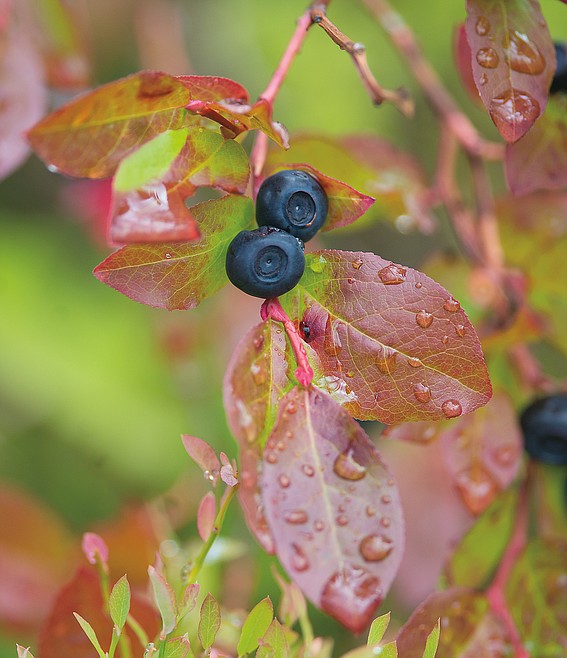Huck study aims to map them across the West
A National Science Foundation graduate student is training computers to recognize what huckleberries look like, with the hopes of mapping the native berry on a landscape level across the West.
Carolyn Shores spent a week drawing nearly 200 polygons around red huckleberry patches and other landscape features in the images, captured via remote sensing from airplanes. The mapping tool she’s developing needed a foundational knowledge of what huckleberries look like aerially and what they don’t look like — the other features were rock or ice, which aren’t the characteristic red color of huckleberries in fall.
Huckleberries also reflect light differently than forests, and the way the colors of a huckleberry shrub “relate” in the larger texture appear unique as well.
“We’re hoping that this tool will help us map huckleberries on the landscape level across the United States,” Shores said in a talk last week.
Shores is working with U.S. Geological Survey research ecologist Tabitha Graves to study the distribution, productivity, and phenology of huckleberries, which comprise 15 percent of bear diets in Glacier National Park.
Graves is interested in human impacts and the effects of climate change on huckleberries. Earlier work on this important food source started in the 1980s and is in need of revisiting, she said.
While states like Washington do track the commercial harvest of hucks, Montana doesn’t, even though the berries are very popular among locals and tourists. In addition to bears and people, other animals that eat huckleberries include birds, small mammals like chipmunks, weasels, insects, and even hummingbirds, who feed on the nectar from the flowers.
Graves and her colleagues have focused on what factors make huckleberries grow in certain areas, and how the plants’ distribution may be altered with climate change.
There are six known huckleberry species in Montana, five of which inhabit the Park, and at least 12 total in the Northwest. The hucks have a very low germination rate, which is part of why they’re difficult to cultivate — out of 100 seeds, for example, as few as 20 could be successful, Graves explained.
For germination, the seeds need moisture, a specific type of soil, and conditions that will break down their seed coating. For establishment, growth, and spread, the plants need warmth, light, nutrients, and moisture. At the early life stages, they can be disrupted by competition with other plants, and as they mature, they’re vulnerable to disease, pests, and sudden weather conditions like quick freezes.
With climate change, it’s possible that the area will see more heat extremes and higher-intensity fires, neither of which is good news for hucks. Warmer temperatures could increase the risk of disease or predation by insects, and more intense fires could damage their underground rhizomes. Low-intensity fires are good for the plants because they open the canopy and allow more sunlight, but there are a lot of unknowns, Grave said. If temperatures get too warm, more canopy cover would become useful to provide shade.
Other recent studies have indicated that warmer, drier, earlier springs correlate to lower huck productivity, while colder, wetter springs are more beneficial to berry growth.
However, Graves noted that there’s spatial variation in different patches’ productivity regardless of the weather, so it could be more complicated than that. Elevation is also a factor, and has a minor influence on the distribution of the different species, too.
Graves noted that in years like 2015 with warmer, earlier springs, huckleberries grow to a smaller size than they do in cooler years. Additionally, certain plants need cold winter and spring temperatures to initiate spring growth. If they don’t get “chilled,” they require more days of warmth in spring to be stimulated to grow.
Between 2014 and 2015, time-lapse photography indicated, the shrubs and berries demonstrated a month difference in growth patterns — in the colder year of 2014, the plants produced berries a month later than they did in the subsequent year.
The USGS is releasing a ScienceCache app “any day now,” which will allow hikers and citizen scientists to help collect huckleberry data.
Does human harvesting of the delectable berries affect bears?
“We have a lot of space in this area that is not accessible to humans,” Graves said.
But if climate change increases pressure on the plants, bears could be affected too, she noted.


